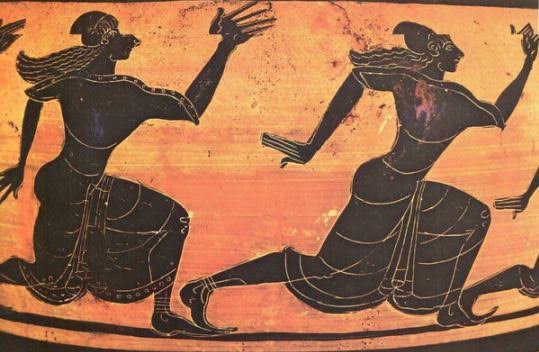When history-lovers hear the name of Olympia, the first thing that comes to mind is the Olympic Games. As the birthplace of the Games, the sacred sanctuary near the confluence of the Alpheios and Kladeos rivers holds a special place in our hearts.
Olympia is a place of legend.
I’ve just finished another draft of my upcoming book, Heart of Fire: A Novel of the Ancient Olympics, and so, I’m currently immersed in the ancient Olympiad and the legends that surround its origins.
My mind is a maelstrom of chariot races, boxing, running, religious ceremony, and cries of victory and defeat – and I love it!
Recently, the Olympic flame was lit once more at ancient Olympia before the lovely ruins of the temple of Hera.
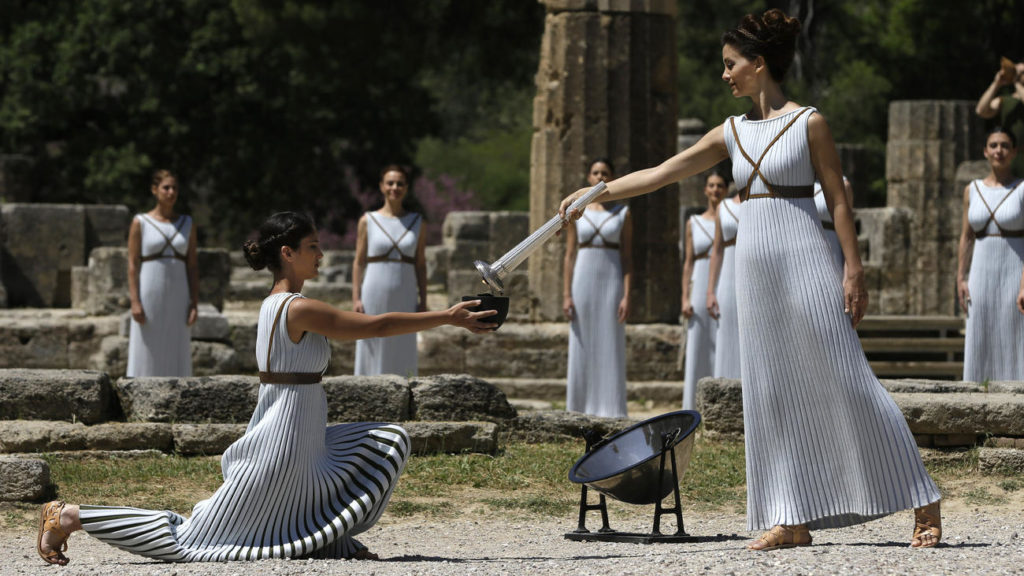
The 2016 torch-lighting ceremony at ancient Olympia
In the coming months, men and women who have struggled for years to perfect their abilities so that they peak at the right moment, will compete in this ancient tradition.
However, things were different in the original Olympiad. The ancient Olympics were closed to women as competitors and spectators, except when it came to the owning and training of horse teams.
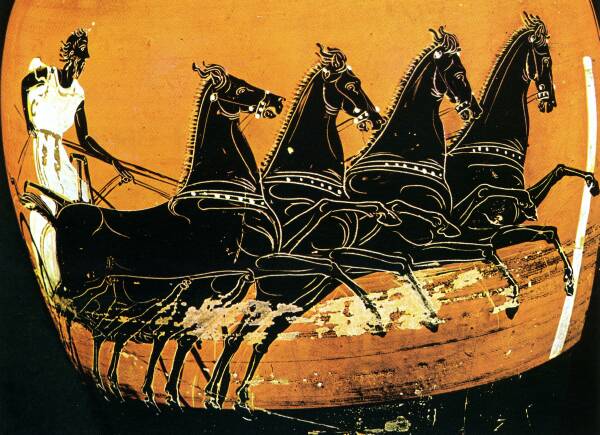
Chariot racing in the ancient Olympics – the one sport in which women could participate as owners and trainers of horses
During the Olympic Games women were not allowed to set foot within the sanctuary to watch their teams compete. An exception to this was the priestess of Demeter Chamayne, who had her own seat of honour at the Games.
However, there was a time when women were permitted within the sanctuary at Olympia, as competitors and spectators.
In the sanctuary of Olympia, not far from the Temple of Zeus, there stands the Temple of Hera, Queen of the Gods and also the goddess to whom another ancient competition was dedicated: The Heraean Games.
The ancient Heraean Games, or the Heraia, were the first official games for women’s athletic competition to be held in the stadium at Olympia. Here is Pausanias’ description of the Heraia, from his perspective in the second century A.D.:
Every fourth year there is woven for Hera a robe by the Sixteen women, and the same also hold games called Heraea. The games consist of foot-races for maidens. These are not all of the same age. The first to run are the youngest; after them come the next in age, and the last to run are the oldest of the maidens. They run in the following way:
their hair hangs down, a tunic reaches to a little above the knee, and they bare the right shoulder as far as the breast. These too have the Olympic stadium reserved for their games, but the course of the stadium is shortened for them by about one-sixth of its length. To the winning maidens they give crowns of olive and a portion of the cow sacrificed to Hera. They may also dedicate statues with their names inscribed upon them. Those who administer to the Sixteen are, like the presidents of the games, married women.
The games of the maidens too are traced back to ancient times; they say that, out of gratitude to Hera for her marriage with Pelops, Hippodameia assembled the Sixteen Women, and with them inaugurated the Heraea.
(Pausanias, Description of Greece 5.16 2-4)
The Heraia were certainly a religious ritual, and the foundation myth indicates that the event was originally a ritual of thanks to the goddess Hera.
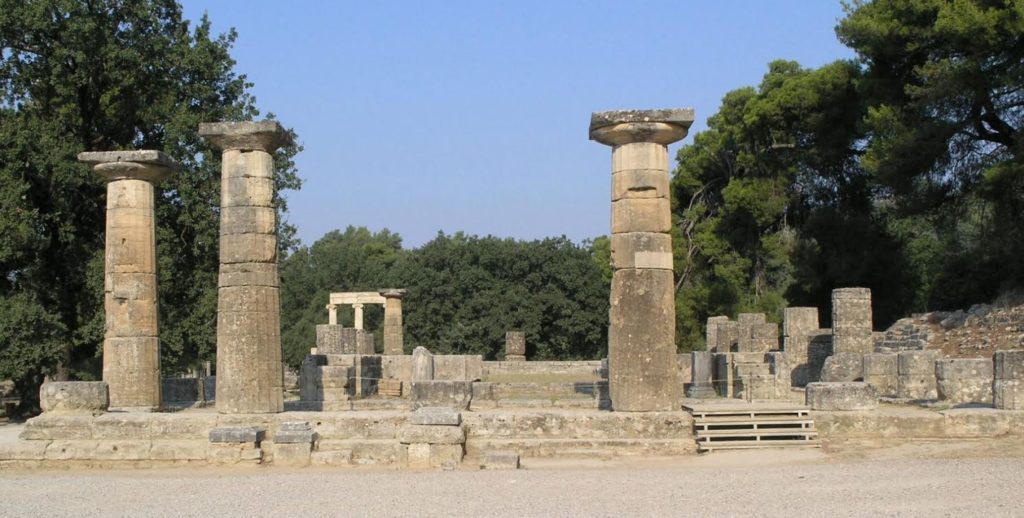
The Temple of Hera at ancient Olympia
This myth is central to Heart of Fire’s story, but I will post more about that in the coming weeks. The short of it is that Pelops (after whom the Peloponnese is named) was victorious in a legendary chariot race against Hippodameia’s cruel father, Oinomaus. In thanks to the goddess Hera, Hippodameia held the first Heraia, and the rest is history.
Girls in ancient Greece, with the exception of Spartans, were not encouraged to be athletic. It was frowned upon. But the Heraia continued to gain in popularity and some historians wonder if this was an indication of changing social views and a less restricted life for women. One theory is that this is partly due to the increasing influence of Rome.
In Rome, girls from well-to-do families could participate in men’s festivals. The Capitoline Games in Rome in the second half of the 1st century A.D. included women’s races.
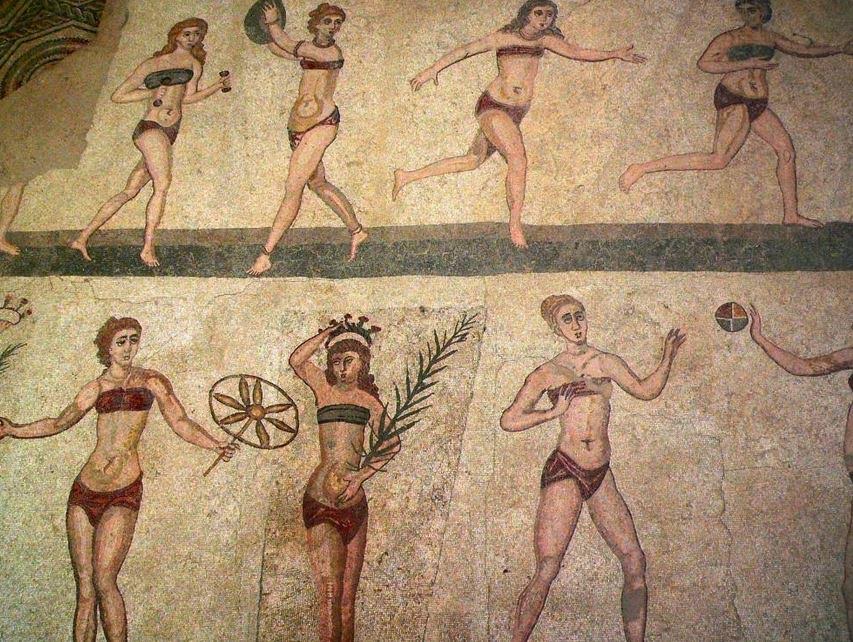
Roman women exercising
So, this year as you enjoy the build-up to, and watch, the 2016 Olympic Games in Rio, be sure to remember ancient Olympia, the Heraean Games, and the unsung heroes whom Nike crowned with olive.
Remember the ancient female athletes who were the forerunners of modern female Olympians. They likely would have been awed by what they had begun.

Women’s 1500 meter runners in Athens 2004 (Getty Images)
Heart of Fire will be coming in late June, if the Gods smile on it, but before the release, I’ll begin posting a ten-blog series on the ancient Olympics.
See you in the stadium!
Thank you for reading.
If you are interested, below is the full video of the 2016 Olympic torch lighting ceremony which took place last week at ancient Olympia, outside the temple of Hera.
https://www.youtube.com/watch?v=_08vOWJMT0Y

